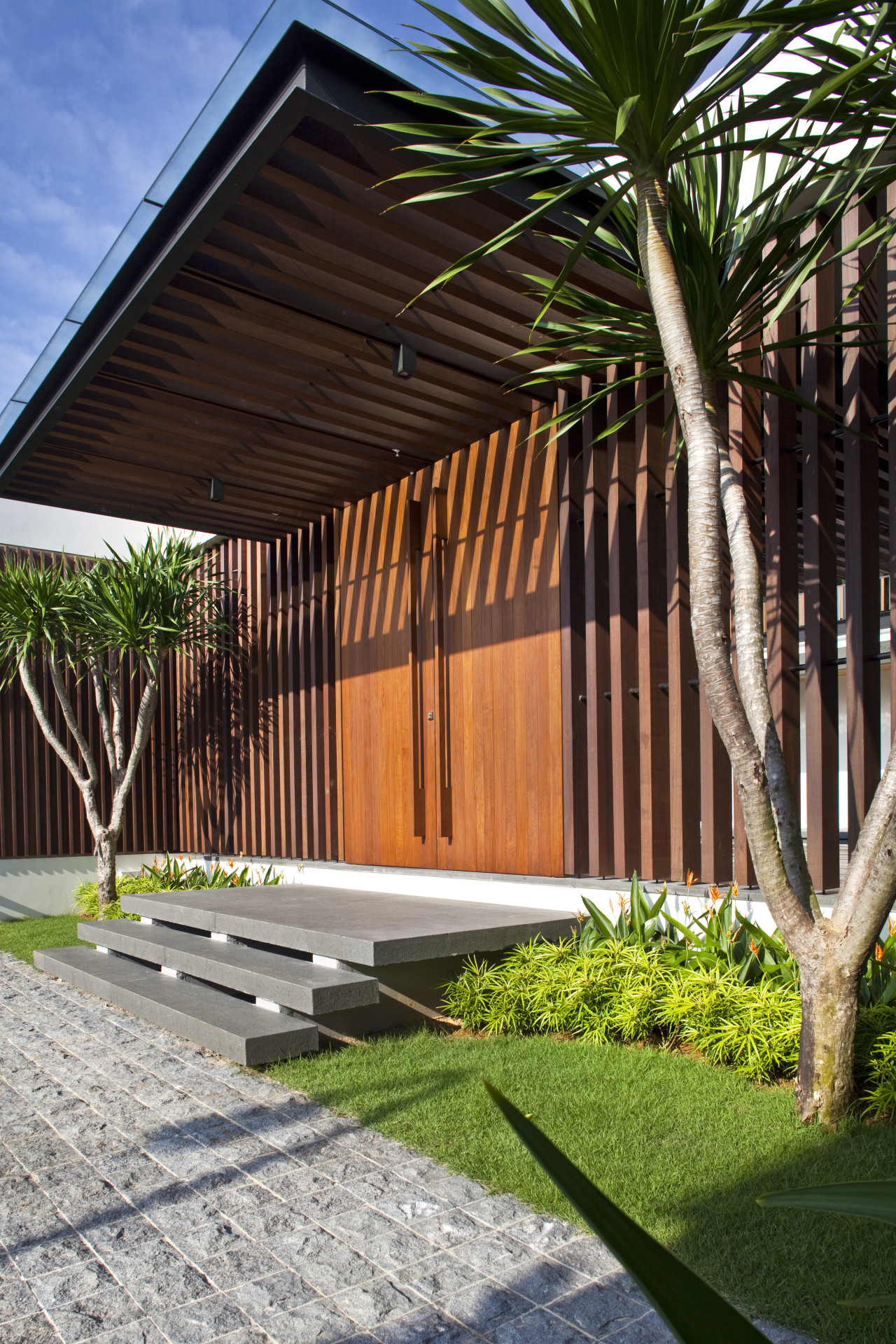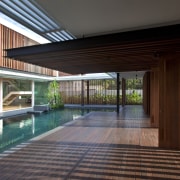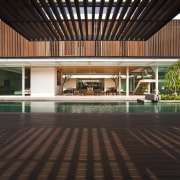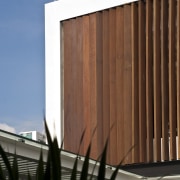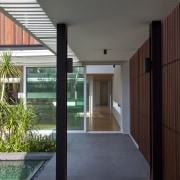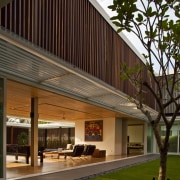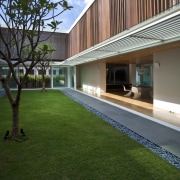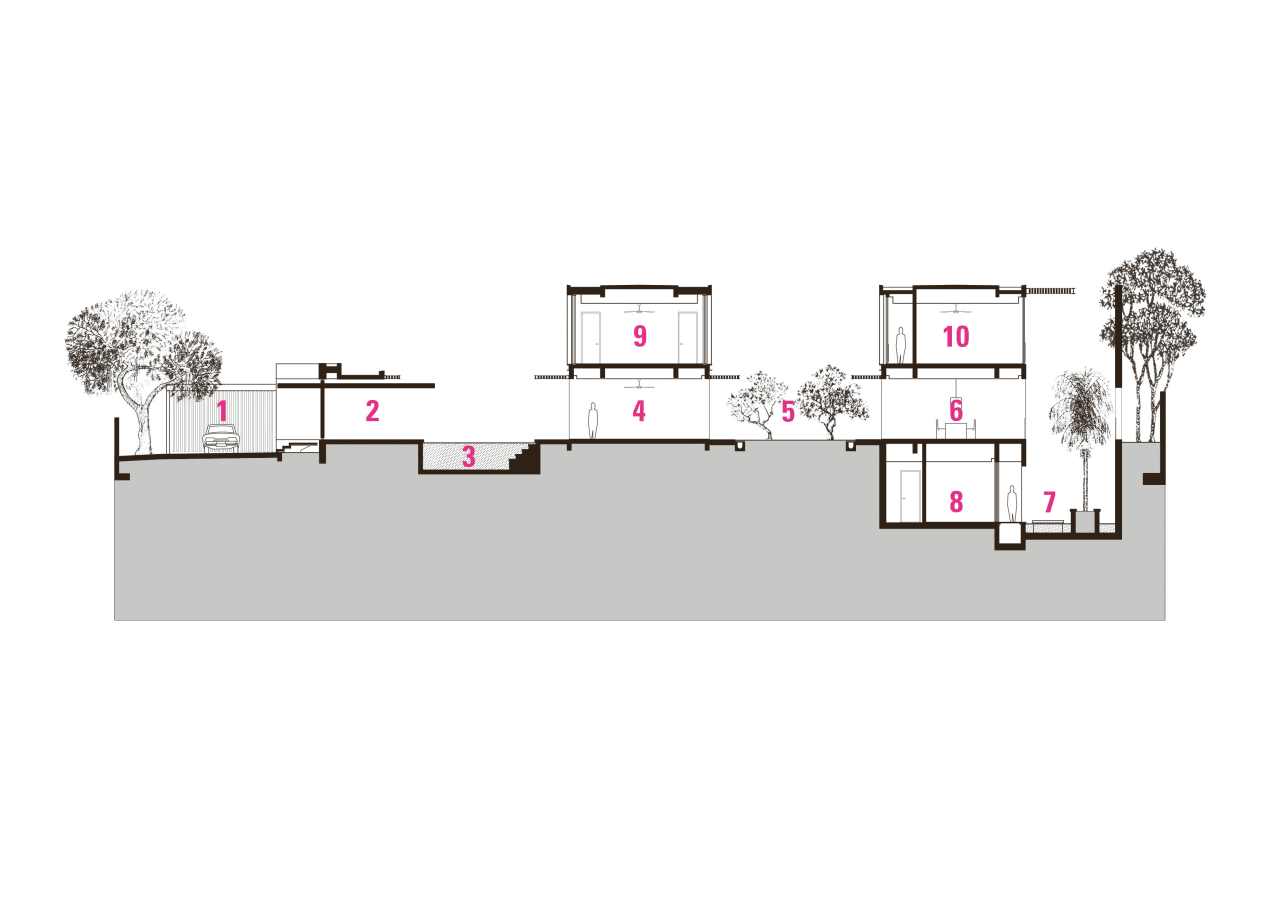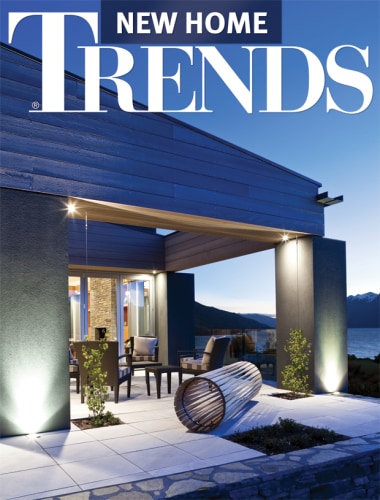Behind closed doors
Peel back the layers and this house is gradually revealed as a green oasis a place to escape the pressures of urban living
Privacy is often sacrificed in built-up areas, especially when a building site is surrounded by neighbours on four sides. But, as this project shows, an innovative architectural design can mean there is no need to compromise.
Architect Robin Tan of Wallflower Architecture + Design says security and privacy were priorities for his clients a couple with two children.
"At the same time, however, they wanted a spacious, contemporary house that would be as open as possible. They didn't want to feel cooped up, even though there are other houses all around the site."
The solution was to build the house within a fully fenced compound, at the same time challenging traditional perceptions of which elements should be inside and which should be outside.
"To provide a substantial private space within the compound, we developed a spatial programme that internalises spaces, such as pools, lawns and gardens, which are normally regarded as external to the envelope of the house," says Tan.
From the front, the house presents a series of layers, each acting as a visual buffer to the street. Gates slide open to provide entry to a forecourt, which in turn leads to large timber doors set within a slatted teak screen that conceals the main building volumes.
"There is a strong symmetry to the front facade," says Tan. "This continues beyond the entrance, to define all the architectural elements."
The symmetry gives the house a certain formality, but the architect has still managed to challenge the traditional idea of an entrance. The two timber doors in the centre of the screen are outside the main building envelope rather than opening into the house itself, they open onto a deck surrounding a large pool.
"We deliberately created a confusion about the actual entry, just as we blurred the distinction between what should be inside and out," says Tan.
The first main volume of the house, which accommodates a spacious living area, sits opposite the pool. Glazed sliding doors and walls create a transparency right through the building to a grass courtyard and a second parallel building beyond. Symmetrical glazed passages on either side of the courtyard link the two volumes, across two levels.
"The column-free volumes allow a continuous, uninterrupted 40m view, from the entrance foyer and pool, through the formal living area to the internal garden courtyard and formal dining area in the second volume," says Tan. "All these spaces are perceived to be within the built enclosure of the house. By zoning spaces such as bedrooms and staff quarters on the top floor and basement respectively, the ground plane is freed from the walls that would have been required if public and private areas were interlaced on the same level."
The hierarchy of public and private areas is also obvious in their distance from the main entrance. The more intimate living and dining spaces are in the rear volume, which is further from the entry.
All the ground-floor living areas and courtyards are sheltered by long aluminium-slatted awnings that are glazed to allow light to filter through, yet protect these areas from rain. A pebble edging to the lawn courtyard allows water from the awnings to drain away quickly.
Tan says the open spatial arrangement helps to cool the house passively by providing cross ventilation.
"All the indoor and outdoor living spaces have differing material finishes and therefore varying heat gain. As long as there are temperature differences between these areas, the spaces become conduits for breezes. Thick masonry walls on either side of the house help keep temperature gradients small within the house, and also act as vast ducting elements, guiding air currents between courtyards."
In both building volumes, the second floor is completely wrapped by slatted timber screens. Every fifth screen element features adjustable louvres that can also help direct breezes and control sunlight.
"The timber screens act as heat barriers and also provide much-needed privacy," says Tan. "The owners wanted to limit the use of air conditioning, so every room also has a ceiling fan."
The expansive master suite occupies the entire second floor above the main living area, while the children's bedrooms are on the top floor of the second wing.
Additional privacy is provided by the boundary landscaping, which features adjustable louvre screens and rapidly growing bamboo plants that enhance the leafy, green outlook.
Story by: Colleen Hawkes
Photography by: Albert Lim
Home kitchen bathroom commercial design
Classic looks, contemporary efficiency
Diving into nature
Personality plus
